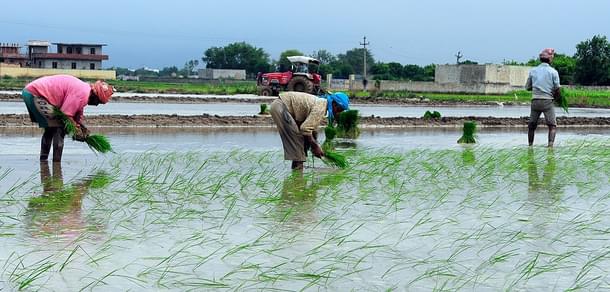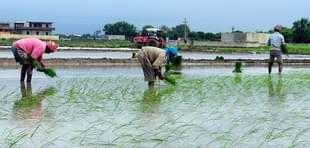Economy
As MSP Becomes The Buzzword Before Elections, Here’s What It Means
Swarajya Staff
Feb 11, 2018, 11:29 AM | Updated 11:29 AM IST
Save & read from anywhere!
Bookmark stories for easy access on any device or the Swarajya app.


In keeping with the government’s stated aim of doubling farmer incomes by 2022, Finance Minister (FM) Arun Jaitley announced the government’s intention of ensuring that farmers get 1.5 times their production costs for their produce during the union budget.
Jaitley has also spelled out that the government plans to set the minimum support price (MSP) according to the actual input cost to the farmer plus the unpaid value of family labour, or in short according to the A2+FL cost to the farmer.
However, this decision of the government will probably see a lot of resistance from the opposition as well as farmers, who have been demanding a different metric for the MSP calculation.
Here, we look at what MSP is and how it is determined by the government.
What is MSP?
MSP is a government measure to protect farmers from market forces which might lead the value of their produce falling below production prices. In the event of a bumper crop, the market value of the crop might take a hit and can lead to huge financial stress to the farmer, especially small and medium ones with no means to store their produce.
Thus, the government, at the beginning of the sowing season, announces a price at which the farmers can sell their produce to the government warehouses. This ensures that the farmers don’t resort to distress sales and can make some profit over their production costs. The MSP announcement before the sowing season hence also allows the farmers to make informed decisions about the choice of crop before investing in it.
The MSP also serves as a key tool for the government to procure sufficient quantities of key cereals to maintain the central pool, which can come to the nation’s rescue in the event of food emergency. Through higher MSPs, the government can incentivise the production of certain crops in line with its needs.
How is the MSP determined?
The central government determines MSPs on the basis of the recommendations of the Commission for Agricultural Costs and Prices (CACP). The commission takes into account several factors like the cost of production - including seed costs, fertilisers, labour, power etc. and aggregates them at the district, state and national levels before making its recommendations.
However, this definition of cost of production has been the subject of debate since long. The three most common ones are as follows:
A2 Cost: This consists of the amount the farmer actually pays out of his/her pocket for buying various inputs ranging from seeds, fertilisers, pesticides to hired labour, hired machinery or even leased-in land.
A2+FL Cost: For small and medium farmers in India, usually the family also contributes towards the farm activity. The A2 cost, however, does not include this family labour involved. Hence, combined with A2, the family labour cost form the A2+FL cost.
C2 Cost: This is more comprehensive and includes over A2 and FL, the interest on the rental value of owned land and the interest gained on the capital value of owned assets.
As expected, the increasing order of these costs is A2, A2+FL and then C2 costs.
How do the costs and current MSPs stack up?
The government currently announces MSPs for 23 crops, and this is how it stacks up for the Rabi and Kharif crops currently:


One can notice that for all rabi crops, the MSPs are already 1.5 times the A2+FL costs.
However, for several Kharif crops, the government will have to revise MSPs to accommodate its promise of ensuring 1.5 the cost of production to farmers. That apart, the improved MSPs are still likely to continue being a topic of debate both economically and politically .




